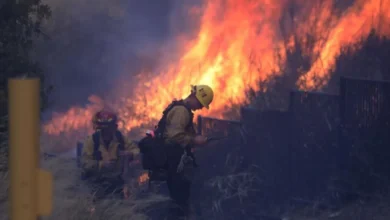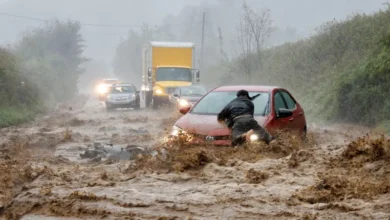UAE teachers open up about being bullied by students

Kindergarten teacher Ruth* belongs to that rare breed of people who truly love their job. The Fujairah resident has spent most of her career working with young children who bring her joy. “When a lesson is going well, it’s such an amazing feeling to see that little light of understanding switch on in the students’ eyes,” she says, while talking about what draws her to the profession.
It wasn’t always so picture-perfect, though. During her previous stint at an international school, Ruth says that she was “slapped, kicked, pinched, called names and had chairs thrown” at her by students. She (like all the teachers featured in this article), agreed to share her experience on the condition of total anonymity as she continues to work in the profession and fears retribution.
“Last year I had a child who would, casually and without emotion, insult the teachers and throw things without an incident that precipitated this behaviour,” she says. A trained, experienced teacher, Ruth insists that it wasn’t the usual, run-of-the-mill case of a young child being unable to regulate his/her emotions. “Some of them did behave like that because they were overwhelmed, but that’s something that’s very easy to recognise,” she says.
Sometimes events would take an alarming turn in the higher grades, she says. “Once, a secondary school teacher was pushed and verbally harassed by a student, because the teacher refused to change her test results. The teacher had already given the student a second chance, by the way,” she says.
The teaching assistants, she further states, faced “extreme bullying behaviour”. “My teaching assistant was hit by a boy. When I confronted his parents, they said, ‘This is completely normal, isn’t it?’. But the boy never raised a hand against me, which shows that he knew not to hit.”
Discussions about bullying and harassment tend to revolve around children, and rightly so, but they often neglect to address that teachers can also be victims of such behaviour. The teachers, too, are often reluctant to discuss it outside of conversations with trusted colleagues. “Teachers don’t speak about it because for the most part, school management will side with the children and parents over the teachers. They are also likely to get fired if they make ‘trouble’,” points out Ruth.
Psychologist and relationship coach Sangeeta Manglani says that in her experience, “bullying behaviour towards authoritative figures like teachers is not uncommon.” “That said,” she continues, “these situations are spoken about less frequently, especially in comparison to peer-to-peer bullying. We see a lot more hesitation in reporting such cases due to the dynamics of the concerned authorities, embarrassment, shame and fear of escalation.”
The UK-based Anti-bullying Alliance describes bullying as ‘repetitive, intentional hurting of one person or group by another person or group, where the relationship involves an imbalance of power’. It could be physical (pushing, poking, kicking), verbal (name calling, sarcasm, spreading rumours) or emotional (ridicule, humiliation, intimidation).
And it’s a universal problem that calls for urgent rectification. A 2019 article in The Conversation declared that ‘almost every Australian teacher has been bullied by students or their parents’ and that similar cases have been recorded in New Zealand, the United States and even Taiwan and Finland, where teachers are traditionally well-respected.
Last year, South Korea even passed a law to protect teachers from bullying parents, after a school teacher died by suicide.
Dr Paul Gelston, a clinical psychologist at Dubai Community Health Centre, explains that, from a psychological perspective, bullying is deliberate, aggressive behaviour intended to cause distress to someone. “In that sense, it has a more personal motivation to directly attack a specific person,” he explains. “But in my experience, I don’t see that very often in classes here. What I would see more, within my line of work, is difficult or challenging behaviour that disrupts lessons and challenges the teachers in a way, but isn’t directly personal towards them.”
“The KHDA (Knowledge and Human Development Authority) has encouraged schools in Dubai to have an inclusion department, so that students with additional needs—whether that’s academic, emotional or anything else—receive adequate support when needed,” he adds. “And because of that framework, schools, teachers, and therefore students and families, are generally well-supported in Dubai schools.”
What bullying looks like
The most common tactic of bullying is defiance, says Nikita Barretto, a Dubai-based clinical psychologist. “That would include not listening to the teacher, incomplete homework, disturbing the classroom and creating hurdles for the teacher to complete her work. In older children, you will also notice confrontational behaviour where they defy them, ask irrelevant questions in the classroom… Some of them even make false complaints against the teacher to higher school authorities.”
Fatima*, an English teacher based in Dubai, would likely attest to this. Although she hadn’t personally faced bullying or harassment, she says she once watched helplessly as a secondary school teacher was relentlessly targeted by students and their parents.
“She teaches Maths and is the best,” says Fatima. “But students blamed their poor grades on her and lied to their parents, saying what a horrible teacher she was. As a result, the parents constantly picked up fights with her and were so disrespectful towards her. There was a clear difference in the way they interacted with me and my colleague.”
Like Ruth, she too insists that it wasn’t a case of ‘kids being kids’. “We teachers have to undergo Safeguarding Essentials training before getting hired by any school. So we are fully aware of what bullying looks like. Calling people names, commenting on their looks, lying about them … the students even searched her on Google to make fun of her pictures.”
Fatima recalls how her colleague, often reduced to tears, would approach her after school. “She was sad, heartbroken and shocked. It devastated me because she truly loved her students. She was just a pusher and wanted them to do well.”
Luckily, the school authorities were supportive of the teacher and things gradually began to get better. “The students’ grades also improved, so the parents stopped complaining,” she adds.
Sangeeta Manglani once counselled a student who refused to participate in discussions and respond to questions in class. “Through in-depth conversations with the child, I began to understand that there was an overlooked correlation between the child’s behaviour and the family dynamics which made the child feel less cared for and loved.” The child, she continues, grappled with self-doubt and self-esteem challenges. “Over time, with counselling, we have seen a gradual, but obvious, improvement in the child.”
“I think the important message is that bullying is often a call for help and a sign that the person needs support and guidance through whatever issues s/he may be facing,” she adds.
A noble profession
We also talked to a high school teacher, Susan*. Susan has been teaching at charter schools on the outskirts of cities like Abu Dhabi and private international schools for seven years. She says that for the most part, her students were well-behaved, hardworking and well-supported by parents who were involved in their lives. However, the only bad experience that she had at a school years ago nearly broke her spirit. She says that the students were disrespectful and threatening, refused to follow her instructions, mocked teachers by indulging in body-shaming and were “rambunctious”.
When we speak via Google Meet, she demonstrates how she’s been trained to break up physical fights among students. “You have to keep your palms like this,” she says, joining them together like one would before diving into a lake. “And then,” she says, quickly spreading them apart, “do this”.
Once, a violent fight erupted between the students after school and Susan tried to intervene by separating them. “I was quite fearful that I was going to get hurt.” The school authorities, she says, were uncooperative. “My emotional, physical and mental health went completely down the tube.” She remained in the school until the end of her two-year contract.
But barring such incidents, the teachers insist that they have had a wonderful career. Susan, for instance, cannot imagine doing anything else with her life as she’s dreamt of being a teacher for as long as she can remember. “Its 100 percent because of the kids,” she smiles. “I know kids are not inherently bad. They are like little sponges – they can learn so much. Their future is ahead of them, and we can give them so much. I love to see that lightbulb moment with the kids while teaching them, and how they rush into my class because they are keen to learn.”
Why kids bully
Bullying is an unhealthy and immature coping technique, says Nikita Barretto. “It creates a power dynamic which gives you an illusion of safety – that you are stronger than someone else. With kids, their behaviour is often modelled on that of their parents, caregivers, siblings, or anyone who is in close proximity to them.”
“Sometimes, bullying is also a displaced reaction,” she continues. “When children are bullied themselves or may experience some form of abuse or control at home which makes them feel helpless, they usually try to bully a teacher, a school authority or even other students as a way of dealing with the trauma of being bullied themselves. They cannot defy at home, so they try to defy authoritative figures who they know won’t have the same reactions as their parents.”










